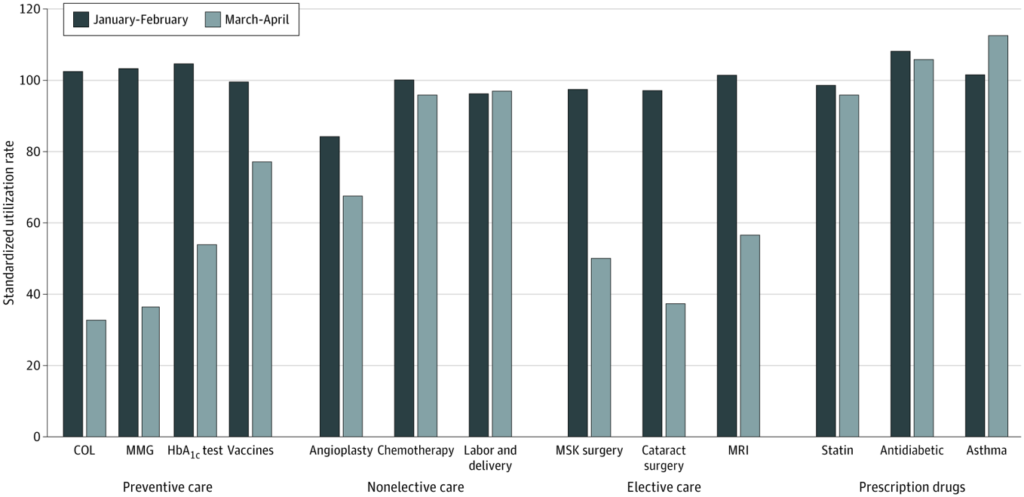The coronavirus disease 2019 (COVID-19) pandemic has placed unprecedented strain on patients and health care professionals and institutions, but the association of the pandemic with use of preventive, elective, and nonelective care, as well as potential disparities in use of health care, remain unknown.
The researchers examine changes in health care use during the first 2 months of the COVID-19 pandemic in March and April of 2020 relative to March and April of 2019 and 2018, and to examine whether changes in use differ by patient’s zip code–level race/ethnicity or income. They examined data from 6.8 million people who have employer-provided insurance. To address concerns that the pandemic disproportionately affects vulnerable populations, the researchers also analyzed care differences based on income, ethnicity and ZIP code.
Published by JAMA Open Network, the new study found that overall healthcare use declined by 23% in March 2020 and 52% in April. Drops in diagnostic procedures unable to be conducted by telemedicine were especially precipitous. In March and April, colonoscopies decreased by nearly 70% when compared to the same period in 2019. Meanwhile, reductions in mammograms were 67% among women age 46 to 64.

In this cross-sectional study of a large US population with employer-sponsored insurance, the first 2 months of the COVID-19 pandemic were associated with dramatic reductions in the use of preventive and elective care. Use of telemedicine increased rapidly but not enough to account for reductions in in-person primary care visits. Race and income disparities at the zip code level exist in use of telemedicine.
A press release about the study is here. The full study can be found at JAMA Network Open.
Citation: Whaley CM, Pera MF, Cantor J, et al. Changes in Health Services Use Among Commercially Insured US Populations During the COVID-19 Pandemic. JAMA Network Open. 2020;3(11):e2024984. doi:10.1001/jamanetworkopen.2020.24984.

You must be logged in to post a comment.